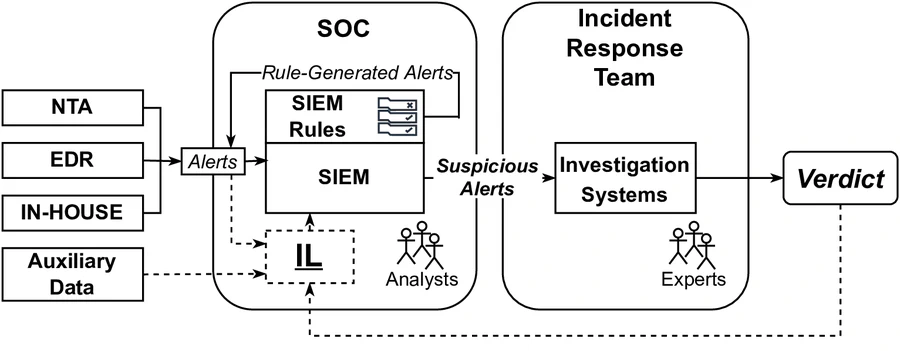
Abstract
Large- and medium-sized organizations employ various security systems to protect their assets. These systems, often developed by different vendors, focus on different threats and usually work independently. They generate separate and voluminous alerts that have to be monitored and analyzed by often overburdened security analysts. Prior work has tried to support analysts by better correlating and prioritizing alerts. In this work, we propose to combine the wisdom of individual security systems using an Integration Layer (IL). We validated our idea by deploying the IL in a large global organization (50,000+ employees) running four very different security detection systems. We did so by using end-to-end red-team exercises to generate real attack data. For training, we labeled our dataset with evaluations directly from the incident response team instead of using the escalated decisions of the first/second tier Security Operation Center (SOC) analysts as in prior works. We showed that our approach considerably reduces the number of alerts requiring investigation while maintaining very high performance on multi-step attack detection – Matthews correlation coefficient (MCC) reaches 0.998. The substantial dependence of the model on features derived from the different security systems supports the viability of our integration methodology. The explainability layer added to our system gives analysts insights into why a particular case is marked as an attack or non-attack. Based on the test results, our approach has been added to the production setup.